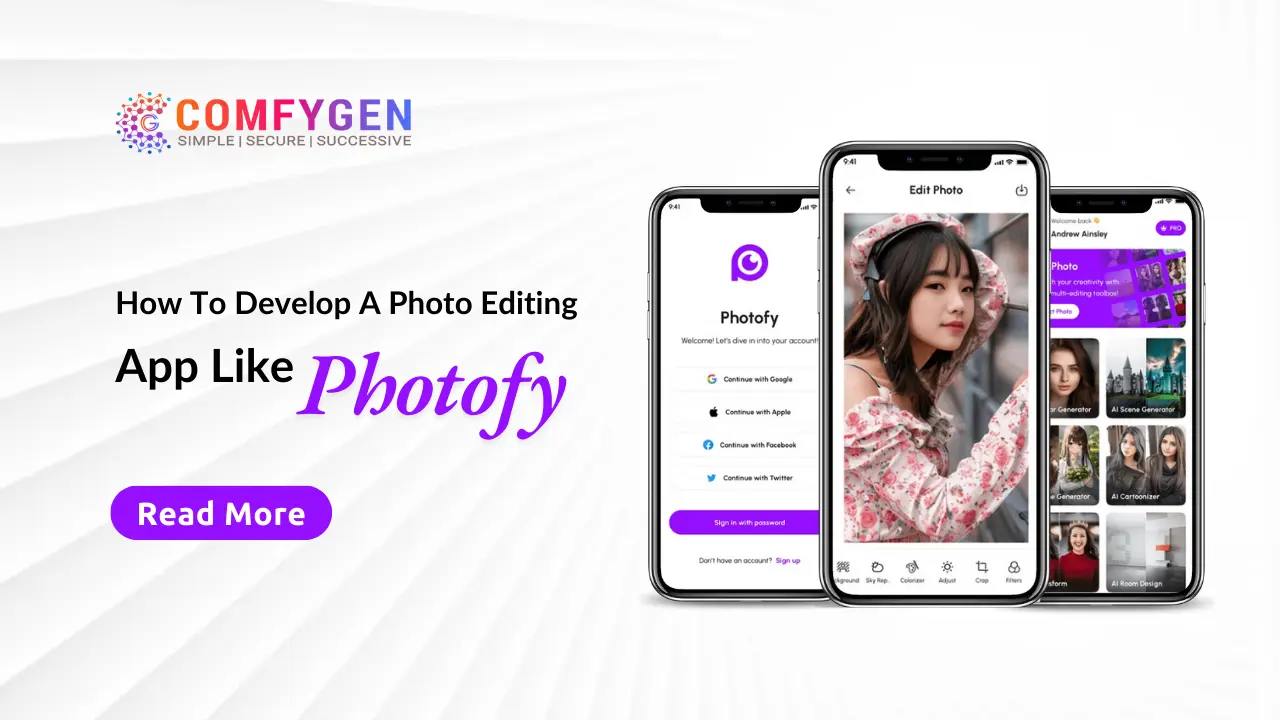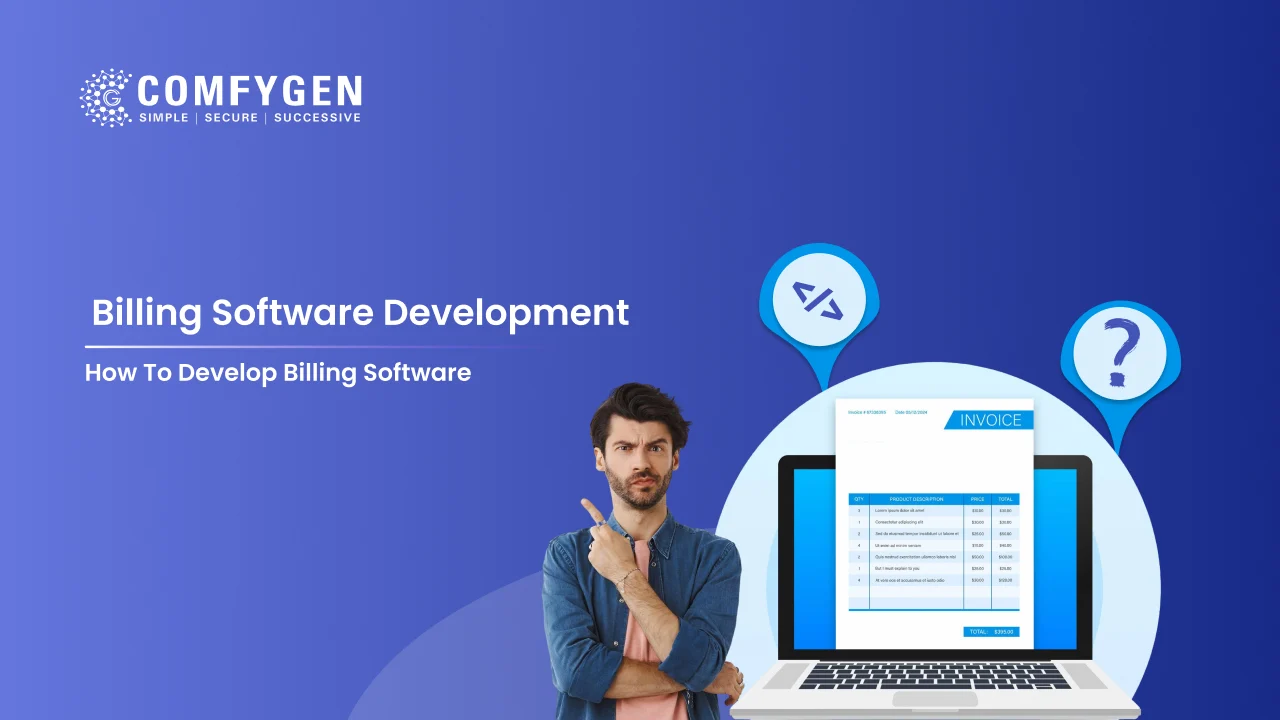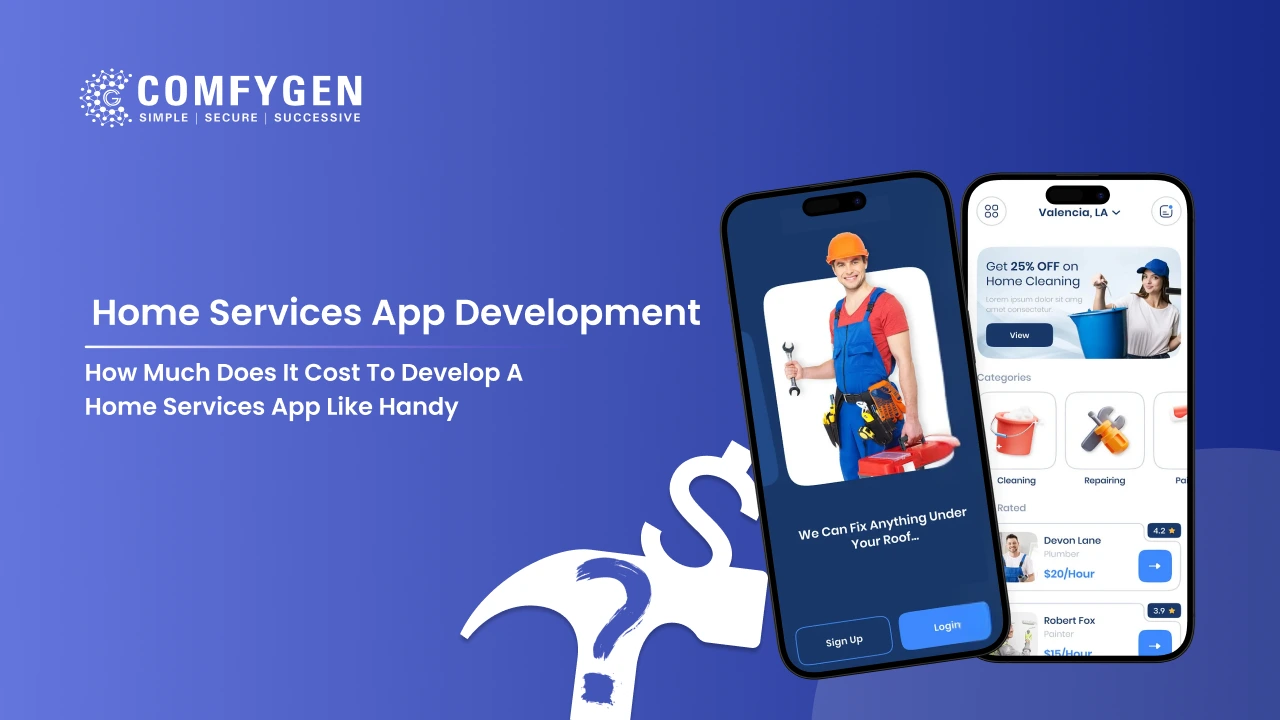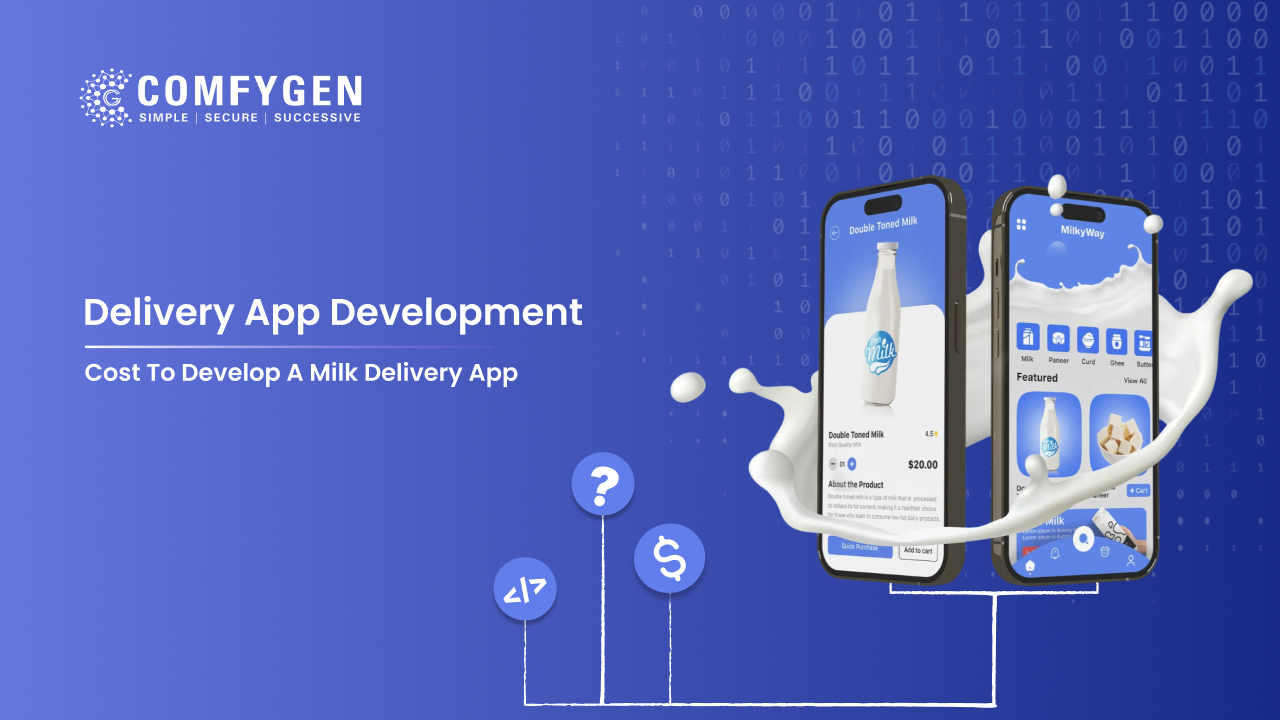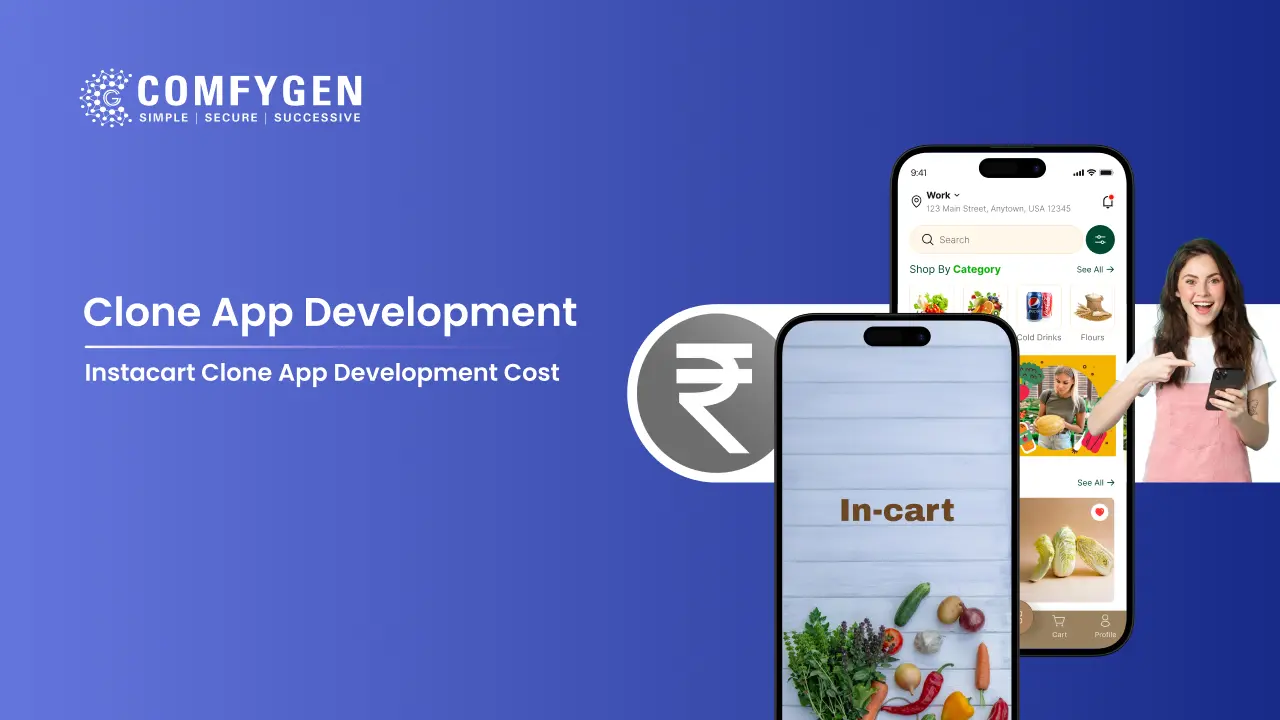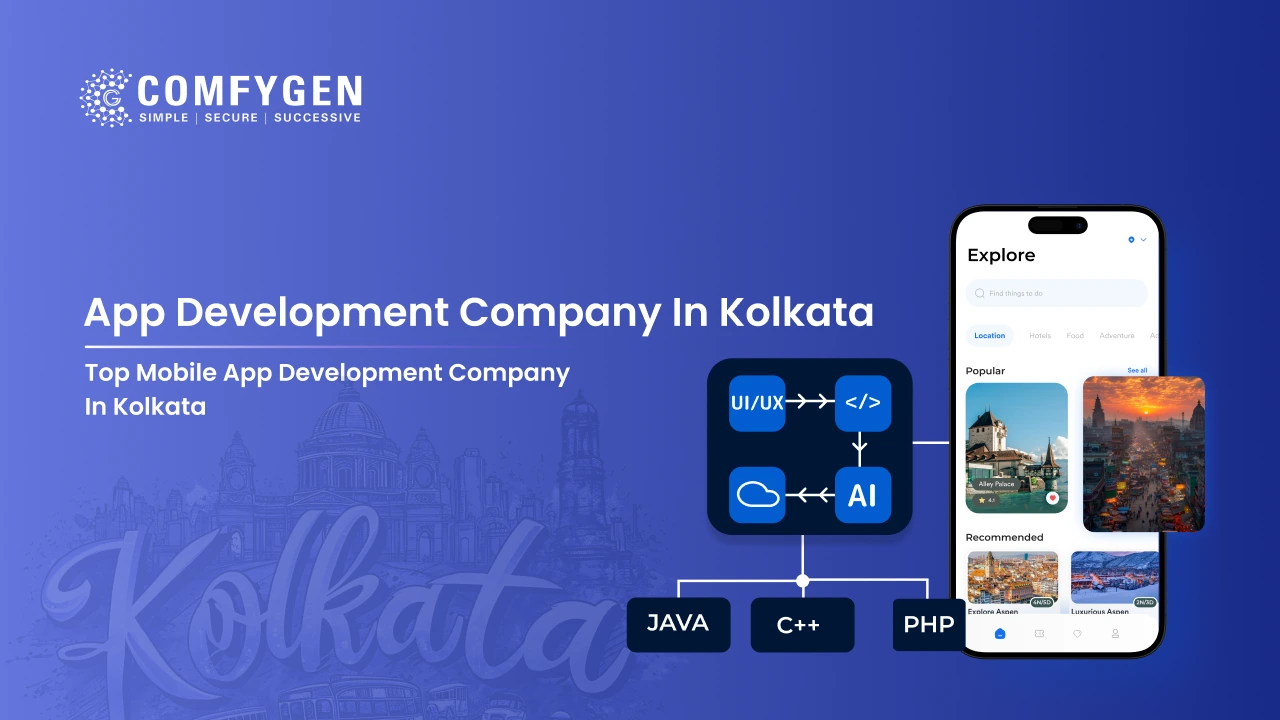How to Develop a Photo Editing App Like Photofy?
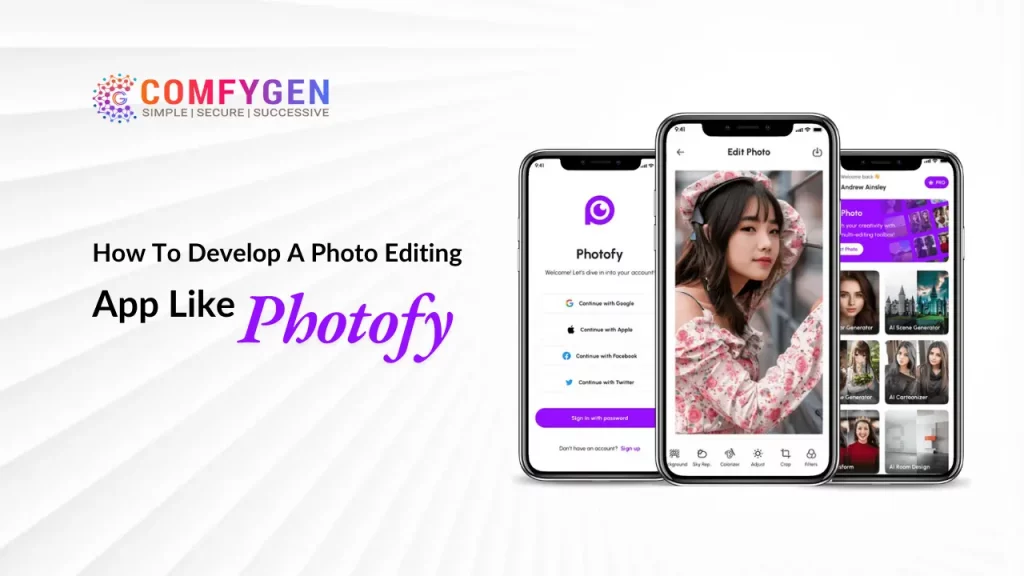
Posting pictures on social media never goes out of fashion. Pictures mean appearance, which has to be perfect.
Photo Editing Applications are the need of the hour to edit pictures and make them look beautiful and appealing.
There are hundreds of the best photo-editing mobile apps globally. The demand for such apps is increasing rapidly due to social media evolution. So, entrepreneurs, you can plan to build a photo-editing app.
Photo editing app development can be good revenue-generating source. If you build photo editor applications with some engaging feature ideas; that has the potential to give you a dollar business.
Before you begin the executions, have a look at this blog and learn about photo editing app development.
Market of Photo Editing Apps
The demand for photo editing apps is heavily increasing, and the shown stats will prove it:
- In 2023, the photo editing app market size was USD 318.2 million. Anticipations say that the market will reach USD 572.3 million by 2030.
- A survey says photo editor apps are used in 4 out of 10 smartphones every day across major markets.
- India and China are the two countries excelling in the use of photo editing tools.
These are a few stats. However, the market will grow exponentially. If you plan to develop a photo editing tool, explore and take a step ahead in business.
How Does Photofy Work?
There are many photo editing apps available in the market with unique features and various functionalities. But almost every application works similarly. Such as:
- Firstly, the user has to upload a picture on the app.
- Later, he has to choose the background frames, filters or presets.
- Once you are done, now begin the editing part. You have to make the picture’s lights, angles, shadows, and other elements completely accurate.
- Now you will receive an option of “Save the Picture”.
You can either save the image and use it according to your preference. Otherwise, directly share the image through the application on your social media accounts.
Features in Photo Editing Apps like Photofy
Some necessary features you must implement during photo editing app development:
| Features of apps like Photofy | Descriptions |
|---|---|
| Filters & Effects | Instantly enhance photos with various filters and effects for professional-looking edits in just one tap. |
| Text Overlay | Add customizable text to photos, allowing font style, size, and color adjustments for personal messaging. |
| Collage Maker | Combine multiple images into stunning collages with flexible layouts and creative designs for memorable visuals. |
| Stickers & Emojis | Add fun with stickers and emojis, including seasonal and trending packs, for a playful touch to photos. |
| Background Eraser | Effortlessly remove backgrounds with AI, creating transparent or customizable backgrounds for versatile edits. |
| Beauty Tools | Includes skin smoothing, blemish removal, and face reshaping options to enhance selfies and portraits naturally. |
| Crop & Resize | Adjust photo dimensions by cropping and resizing, ideal for social media and specific aspect ratios. |
| Advanced Editing | Tools like curve adjustment, color tuning, and selective editing for precise control over photo details. |
| Templates & Presets | Ready-to-use templates and presets for quick, consistent edits across various styles and themes |
| Undo/Redo Options | Allows users to easily revert or redo changes, ensuring flexible editing without fear of mistakes. |
| Frames & Borders | Add stylish frames and borders for a polished look, enhancing the aesthetic appeal of photos. |
| Color Splash | Convert parts of the photo to black and white, leaving specific colors for a dramatic effect. |
Advanced Features Can Add in Photo Editing Apps and Tools
To make your application similar to Photofy more attractive and interactive, listed are some advanced features you can add to your photo editing app:
AI-Powered Object Removal: Automatically detect and remove unwanted objects from photos with AI, seamlessly blending the background for a cleaner look.
3D Photo Editing: Create immersive 3D effects with depth adjustments and layering, adding dimension and realism to photos.
Selective Color Editing: Adjust colors in specific areas without affecting the entire image, allowing precise color control and creative color schemes.
Face Recognition Retouching: Automatically detect facial features for targeted retouching, enhancing areas like skin texture, eyes, and teeth without over-editing.
Lens Blur & Bokeh Effects: Mimic DSLR-quality depth of field effects, blurring backgrounds while keeping subjects in sharp focus for a professional look.
Customizable Presets: Save unique filter combinations and editing settings as reusable presets, allowing users to maintain a consistent style across edits.
RAW Image Support: Edit high-resolution RAW files for greater control over image quality, perfect for professional-grade photo editing.
Double Exposure: Blend two images creatively, allowing users to overlay photos for artistic double-exposure effects that enhance storytelling.
Batch Editing: Apply adjustments to multiple photos simultaneously, saving time for users working on large sets or similar edits.
Dynamic Light Effects: Add realistic light effects like sun flares, neon glows, and shadows to enhance mood and atmosphere in photos.
Tech-Stacks Used to Build Apps like Photofy
We need strong and secure technologies to build a photo editing app like Photofy. Listed is the tech stack used to best photo editing app development:
Machine Learning (ML): Enables AI-based features like object recognition and auto-enhancements.
Augmented Reality (AR): Adds virtual objects or effects to live photos.
Computer Vision: Analyzes images for object detection, background removal, and facial recognition.
OpenCV: A popular library for image processing and real-time editing.
TensorFlow: Facilitates AI model integration for effects like facial filters.
React Native: Builds cross-platform apps with native-like performance on iOS and Android.
Swift (iOS): Creates smooth, high-performance editing features for iOS photo editing applications.
Kotlin (Android): Develops feature-rich photo editing apps for Android devices.
GPU Acceleration: Speeds up the processing of complex effects like filters and adjustments.
Cloud Storage (AWS, Firebase): Stores edited images securely and enables seamless access across devices.
RESTful APIs: Connects app with external services for sharing or cloud editing.
FFmpeg: Processes and compresses images and videos for optimized performance.
SQLite Database: Manages user data, presets, and saved projects within the app.
ImageMagick: Performs high-quality image transformations like resizing, filtering, and color adjustments.
In-App Purchases SDK: Enables monetization of premium features within the photo editing app.
Integrate Trending Technologies to Building Photo Editor Mobile Applications
By using some trending technologies, we can make the best photo editing mobile apps more interactive and engaging. Learn about those integrating techs:
- Machine Learning (ML):
Machine learning models enable intelligent features like facial recognition, object detection, and auto-correction.
Through ML, apps can analyze photo content and suggest enhancements, automatically adjust settings, and even remove objects, creating smarter, personalized editing experiences for users without requiring manual input for every adjustment.
- Augmented Reality (AR):
AR technology enhances photo editing by allowing users to overlay virtual elements, such as stickers, accessories, or makeup, onto live photos.
By using real-time camera capabilities, AR adds dynamic elements and provides a fun, interactive editing experience, which is ideal for social sharing.
- Computer Vision:
Computer vision enables an app to “see” and interpret images. It allows precise detection of elements within photos, like backgrounds, faces, and objects.
This technology is essential for advanced features like background removal, object selection, and targeted color adjustments, enhancing the app’s accuracy.
- OpenCV:
OpenCV is an open-source library widely used in top photo editing apps for image processing. It provides tools for transforming images, detecting edges, and implementing filters.
Mobile app developers use OpenCV to build real-time photo editing capabilities efficiently, making it ideal for tasks that demand high-speed image manipulation.
- TensorFlow:
TensorFlow is a machine learning framework that supports implementing AI models for photo editing. It helps integrate features like facial filters, image recognition, and style transfer.
TensorFlow’s powerful libraries enable developers to add complex AI features seamlessly, providing users with advanced editing options.
- ImageMagick:
ImageMagick is a powerful tool for complex image transformations, like resizing, color adjustments, and format conversions.
It enables high-quality rendering and processing of images within photo editing apps, allowing users to apply detailed edits and transformations with precision.
- In-App Purchases SDK:
In-app purchases SDKs enable developers to monetize photo editing apps by offering premium features.
Through in-app purchases, users can access additional tools, filters, and effects, providing a customizable experience and generating revenue for the app without relying solely on ads.
How to Build Apps Like Photofy – The Development Process
To build an app like Photofy, there is a step-by-step process you have to follow:
Market Analyzation and Planning: Beginning with market investigation to know the user requirements, leading features to follow, and strategies to employ against competitors. Set app goals, audience, and features that define it from others.
Design Core Features: Create a list of basic features such as filters, background removal, and social network sharing. Advanced features should be included to provide value and encapsulate features that stand out against the competition.
Select Tech Stack: Select technology and framework based on the target platforms(XC-iOS/Android). For mobile development, neologism would be suited to Swift and Kotlin. For AI and image processing, use TensorFlow and OpenCV.
Design UI: Create an intuitive and visually appealing UI along with an easy-to-use set of editing tools and gimmicks. Prototype wireframes, with more emphasis on being simple, highly usable, and enabling seamless editing.
Development: Implement important editing functions such as filters, cropping, and brightness adjustments. Use libraries such as OpenCV for image manipulation, such that they are smooth and intuitive for users.
Integrate AI & Advanced Features: Insert AI approaches for smart editing features, such as removing unwanted objects or recognizing human faces. Matrixes such as TensorFlow support very accurate and responsive advanced features.
Testing & Optimization: Do rigorous testing to remove bugs that can adversely affect performance. Utilize both manual and automated testing to settle the whole app experience, stripping load times and responsiveness before going live.
How Photo Editing Apps Can Make Money?
Developing a new photo editing app with unique features is not enough, when you are unable to monetize it properly. So here are some monetization strategies to make money through the application:
- In-App Purchases:
You should provide premium features like filters, advanced editors, or effects through in-app purchases. This is a smart way since the user can fully use basic features for free and then upgrade for a cost, letting your app make money from users who might want to customize more.
- Subscription Model:
A monthly or yearly subscription for premium features and ad-free experience. This type of model guarantees recurring revenue, especially if the app offers high-value tools that justify subscription, like advanced editing capabilities, AI-powered features, or regular content updates.
- Freemium with Ads:
Offer users the freemium version on the condition they view ads, therefore allowing a larger audience to use the app and giving users a chance to pay some fee to remove the ads. The ad model leverages any ad network to earn revenue for the app while providing users with an uninterrupted experience if they purchase an ad-free version.
- Branded Content & Partnerships:
Apart from working with brands in offering customized filters, frames, or effects for revenue generated through brand partnerships. This adds value to your app by delivering unique content to another target user pool, thus, benefiting both parties.
How Much Does it Cost to Build Apps like Photofy?
The average cost to build a photo editing app ranges between $5000 – $40000. This cost will increase if you ask for unique features, extra functionalities, and other things. To quote a client with a certain cost for development, there are some factors that must to considered.
- App Complexity and Features
- Platform Choice (iOS, Android, or Both)
- UI/UX Design Requirements
- Integration of Advanced Technologies (AI, AR, etc.)
- Development Team’s Location and Expertise
- Maintenance and Post-Launch Support
How Comfygen Can Help with Photo Editing App Development?
Comfyzen is a leading mobile app development company that specializes in developing tailor-made, custom photo editing applications that deeply reflect one’s vision. Set to explore advanced technologies like AI and AR, we empower innovative features and seamless user experiences. They support every developmental phase from inception to launch, suitably creating just the kind of app that competes undeniably with its market counterpart.
- Expertise in Photo Editing Features
- Skilled in Advanced Technologies (AI, AR)
- Customized UI/UX Design
- Cross-Platform Development
- Reliable Post-Launch Support
Verdict
The increasingly popular trend of developing such applications is one of the possible inductive rationales in this endeavor for developing an app like Photofy. The growth in social media has always been a counterpart for users to search for easy-to-use tools that help them modify images while expressing their creativity.
Through insight regarding the trends of the market and user preferences, an entrepreneur can now conceptualize creating innovative apps with basic and advanced features, all the way from simple filters to artificial intelligence enhancements. The right selection of suitable technical stacks and a formal process for development are sufficiently useful in guaranteeing product quality.
Besides, taking steps to launch various monetization strategies, for example-in-app purchases and subscriptions models-greatly contribute to a boost in revenue.
Getting the help of an expert photo editing app development service like Comfygen can make this whole process essentially simpler, helping your app get noticed amid stiff competition.
By planning and executing these ideas, you will not just satisfy users’ expectations but also lead to the further windfall of successful business scenarios for your photo editing app.

Mr. Saddam Husen, (CTO)
Mr. Saddam Husen, CTO at Comfygen, is a renowned Blockchain expert and IT consultant with extensive experience in blockchain development, crypto wallets, DeFi, ICOs, and smart contracts. Passionate about digital transformation, he helps businesses harness blockchain technology’s potential, driving innovation and enhancing IT infrastructure for global success.

